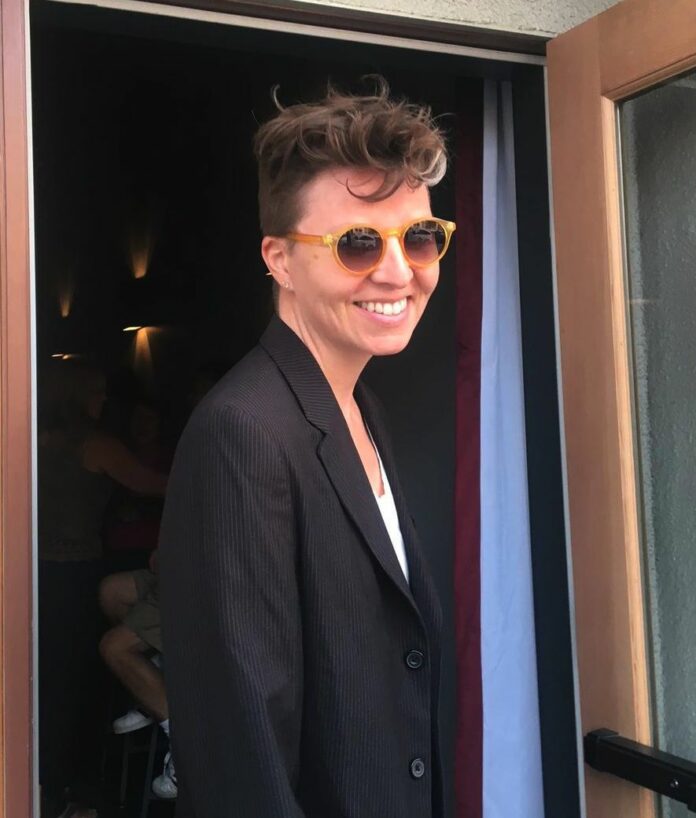I was 32 years old the first time I donated blood. It wasn’t like the chance hadn’t come up. You’d be hard pressed to live in a community that doesn’t host a blood drive within driving distance at least once a month.
So why did I wait so long to do something that literally can save someone’s life?
Statistics from Vitalant, formerly Blood Centers of the Pacific, show approximately 38 percent of the population is eligible to donate blood, yet less than 10 percent actually do.
I guess I’m not the only one who has put off donating. For me blood drives had been somewhere on the back burner my entire adult life. I would see a sign or a post online and think, “Yeah, I should do that, it’s the right thing to do.” But then I would quickly forget about it.
The kick in the rear that finally got me in the blood bank doors was my lack of self-knowledge and health insurance. I had no idea what my blood type was, and as a 30-something year old I felt it was time to be a real adult and figure it out. Plus, I knew I would receive a free health screening and HIV/AIDS test. For the uninsured, free is good.
I scheduled an appointment online and followed the instructions to a T. I drank lots of water and had a healthy meal before I went in. Still I was nervous. I’d had blood work done before, but something told me this was going to be different.
Walking into the blood institute my nerves began to calm. There were comfy couches and smiling faces. It was clean and tidy, more like a brightly lit spa than a blood-taking joint. That day I left feeling good about myself.
The next time I donated blood was at a mobile blood donating station. It was much smaller than the five-star blood institute I went to the first time, but the experience was basically the same. What was I so afraid of before? I think it was mostly the unknown that shaped my apprehension.
For those of you who might be in the same boat, I would like to be real about what to expect when you’re donating blood.
First, the biggest boogie man in the closet, does it hurt?
Well, yes, a little, but I have to agree with Kent Corley from Vitalant who said, “When compared to someone undergoing chemotherapy who needs that blood, or someone affected by a trauma, the pain for blood donors is a small issue.”
I have four tattoos and three piercings. Donating blood was a walk in the park compared to those.
Before showing up to give blood, I highly recommend you schedule your appointment first. This will save you time and allow you to avoid the obligatory small talk in the waiting room, but hey, if you’re into that, walk-ins are welcome.
If you schedule online, you also can go ahead and fill out the awkward questionnaire. If you’ve never done it, be prepared to answer some questions about traveling outside the U.S. and also some really personal questions about your sex life.
The questionnaire is necessary to determine if you qualify as a good candidate for giving blood. That’s why a lot of the questions are about being exposed to blood-borne pathogens. Let’s face it, if you’re someone like me raised in a part of the world where the sex ed handbook is a Bible, you could probably use some practice talking about sex anyway.
When you arrive at your appointment and it’s your turn, someone will go over any questionable questionnaire responses and then prick your finger to test your iron. They also check blood pressure and heart rate. They won’t let you give blood if your body can’t handle it.
If you clear the questions and the finger prick, take a breath, you’re already winning. Next, you get to kick your feet up in a relaxing recliner chair. Get comfortable because you will be in this position for the duration of the donation. The good thing is a basic blood donation only lasts about 10 minutes after the blood begins to flow.
The person taking your blood will search for that vein on your arm that outshines or out-protrudes the rest. They will wrap your bicep up tight with a Velcro-strapped band or something similar. It’s not comfortable, but it serves its purpose.
Once the vein is selected, the needle appears. It’s probably bigger than the needle you remember from getting a shot. Here is a really important tip: you don’t have to watch. Personally, I look the other way and take deep breaths. You can think about that hearty dinner you will eat later (doctor’s orders) or maybe what show you want to watch next on Netflix. There’s going to be a sting and a little burning when the blood is first drawn. Then you’re just chilling for a bit.
Once you’re done and the needle comes out, you have to wait for 15 minutes while indulging on free snacks. All in all it takes about an hour to help save someone’s life.
Contrary to what some may think, blood donations aren’t just needed during declarations of emergency or natural disasters. With a shelf life of 42 days, the need for donated blood never stops.
Oh and by the way, my blood type is O positive, which is the most common and therefore important to maintaining a healthy supply for others.
If you’re at least 16 and feel like being a one-hour hero, look in the paper or online for local blood drives, or you can go to 3505 Industrial Dr. in Santa Rosa any day of the week, except Sunday. Schedule an appointment at Vitalant or call 877-258-4825.








